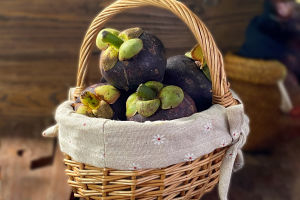Mousse is a classic French dessert known for its light, delicate, and smooth texture. It is typically made with whipped egg whites or whipped cream as the base ingredient.
There are various methods to prepare the mousse, but the fundamental step involves beating egg whites or fresh cream until they reach a fluffy consistency. These are then combined with other ingredients, ensuring a thorough blend.
The mixture can include a wide range of flavors and seasonings, such as chocolate, fruits, coffee, flowers, and herbs, allowing for an array of mousse variations based on the chosen ingredients.
To achieve the desired solid form, mousse requires refrigeration for a specific duration. Chilled mousse develops a smooth and velvety texture that effortlessly melts in the mouth. It is commonly savored on its own as a standalone dessert, but it also serves as a delightful filling or garnish for cakes.
Due to its refined presentation and tantalizing taste, mousse has become a signature dessert in many upscale restaurants and patisseries. With its diverse range of flavors, individuals can select different ingredients and tailor the mousse to their personal preferences and seasonal availability.
Whether it's indulging in the rich chocolate mousse, the fruity delight of strawberry mousse, the refreshing tang of lemon mousse, or the aromatic notes of coffee mousse, each variation promises a gratifying gustatory experience.
In summary, mousse exemplifies a delicate and delectable dessert that has gained immense popularity within the realm of sweet treats, owing to its lightness and diverse flavor profiles. Regardless of the occasion, whether it's a special celebration or an everyday delight, mousse remains an exquisite choice.
When crafting mousse, several essential tips can help achieve optimal results:
1. Ingredient Selection: Opt for fresh and high-quality ingredients to elevate the taste and texture of the mousse. Utilize fresh fruits, premium chocolate, or other flavorings to enhance the overall experience.
2. Whipping Egg Whites or Whipped Cream: The airy consistency of mousse is derived from whipped egg whites or whipped cream. Ensure that both the egg whites and cream are adequately chilled before whipping. Whipping them in a cooled container will enhance volume and stability.
3. Gentle Incorporation of Flavors: When adding flavors to the whipped egg whites or whipped cream, exercise a gentle hand to preserve the lightness of the ingredients. Utilize a rubber spatula or employ a delicate folding motion to evenly blend the flavors into the mixture.
4. Layered Refrigeration: If creating a multi-layered mousse, allow sufficient refrigeration time between layers to ensure a firm setting. Verify that the preceding layer has fully solidified before pouring the subsequent layer.
5. Appropriate Chilling Duration: Proper refrigeration is crucial to achieving the desired texture and taste. Generally, mousse should be refrigerated for a minimum of 2-4 hours, or even overnight, to fully set.
6. Artful Decorations: Elevate the visual appeal of your mousse by incorporating elaborate decorations. Employ fruits, chocolate chips, nuts, or other garnishes to create an enticing presentation.
7. Gentle Removal: Before enjoying the mousse, gently immerse the bottom of the mousse mold in warm water to facilitate easy removal. Alternatively, enveloping the mousse mold with a warm towel can slightly melt the edges, aiding in a smooth release.
By following these tips, you will be able to create a velvety and delicious mousse. Remember, mousse-making requires patience and finesse, but with practice, you will achieve excellent results.


